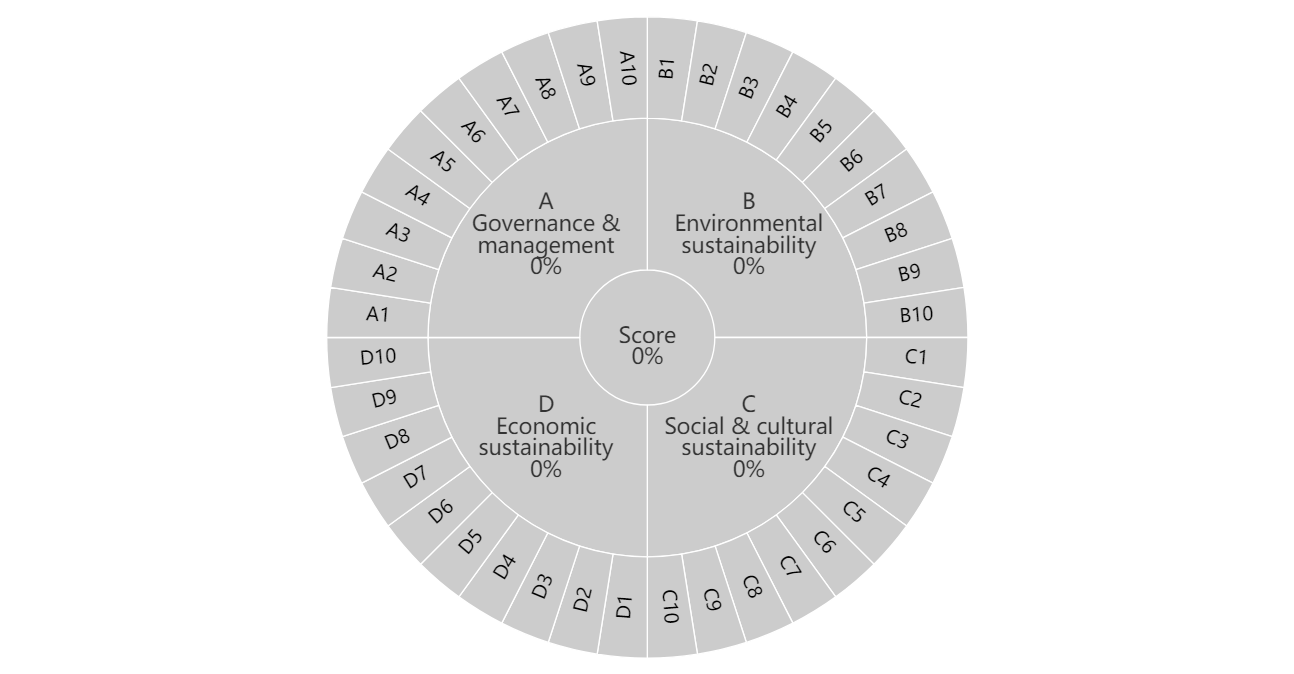Visitor Management Assessment & Strategy Tool (VMAST)

The Visitor Management Assessment & Strategy Tool (VMAST) is a new addition to the UNESCO World Heritage Sustainable Tourism Toolkit and complements and integrates the 'How to' guides. VMAST is specifically developed within the context of the UNESCO World Heritage Convention (1972) to help site management authorities manage visitation and tourism for the protection of heritage values while contributing towards local sustainable development, adaptive and resilient communities.

VMAST for World Heritage sites is a useful tool in the management of all sites attracting visitors and tourists. Developed as a self-assessment and strategy development tool for site management authorities, it can be applied on a regular basis to support integrated, adaptive and proactive management.
Know where you are before you decide where to go. VMAST helps you assess how you achieve essential governance and visitor management indicators, and contribute towards sustainability and development indicators. Upon a site specific baseline, use VMAST to track progress and performance over time. Remember, "best practice" is not a status - it is an ongoing effort to adapt and improve.
Use VMAST to develop a new or refine existing tourism and visitor management strategies and action plans. Regular use of VMAST will help you adapt and prioritise efforts in response to management needs and opportunities.
The VMAST includes a diversity of strategic objectives for the benefit of the community while protecting World Heritage. As such, VMAST is a good platform for inviting local stakeholders in a collaborative effort to strengthen community sustainability and resilience through tourism and visitor management.
UNESCO is offering one official VMAST account per site, including one user. To claim your acount, fill in this form:
Once the account is set up, you will receive a link, allowing you to create a password, log in and start using VMAST.
Optimal use of VMAST requires stakeholder involvement and collaboration in the efforts to supply correct information for the Assessment, to discuss outcomes of the Appraisal Report, to formulate a SMART Strategy and Action Plan, and -of course - its implementation.
The assessment is structured
under four main goals
While Goal A focuses on governance and visitor management for the protection of heritage values of the site, Goal B – D focus on visitor management as a means to localise the UN sustainable development goals while protecting heritage values. Each goal is set out through 10 strategic objectives including a set of target indicators.
The first time you make use of VMAST it is recommended to complete the full assessment in order to establish a visitor management baseline.
The VMAST appraisals tells you how you score against the goals and strategic objectives. Upon the baseline, appraisals can be used for monitoring visitor management efforts over time, identifying opportunities for improvement in order to adapt to new and emerging challenges.
Remember, VMAST is not about demonstrating the highest scores but to take on adaptive and proactive management, and demonstrate progress over time.
Structured across the environmental, socio-cultural and economic pillars of sustainability, it is specifically useful to assess how well management is aligned with national and local sustainable development agendas.
Based on the appraisal identifying what you are doing well and where you have the potential to improve, prioritise the strategic objectives for your site.
VMAST allows you to create SMART (specific, measurable, assignable, realistic and time related) strategy components which may be brought forward through the World Heritage site management authorities alone, in partnership with other stakeholders, or taken on through participatory management and collaborative stewardship of the site.
VMAST is developed in the context of UNESCO World Heritage Convention (1972), the Operational Guidelines for Implementation of the Convention, the Periodic Reporting Tool, the UN Sustainable Development Goals, the Global Sustainable Tourism Criteria for Destinations (GSTC-D) among other relevant resources.
The initiative to develop a visitor management baseline assessment tool was first launched through the Nordic World Heritage Foundation with input from World Heritage site managers in the Nordic and Baltic region. The project was later transferred to and elaborated under the UNESCO World Heritage Center with financial support from the Government of Norway. A broad spectre of stakeholders, including the Advisory Bodies (IUCN, ICOMOS, ICCROM), site management and professionals working in the field of sustainable development and tourism, has contributed in its development. VMAST has also been tested among a number of World Heritage sites. VMAST is hosted and supported through Zegeba in collaboration with World Heritage Catalysis.
UNESCO World Heritage Centre has developed a set of 'How To' guides for managing tourism. These easily accessible resources are focused on best practice approaches to sustainable economic development through tourism. The first of their kind, the 'How To' resources offer direction and guidance to managers of World Heritage tourism destinations and other stakeholders to help identify the most suitable solutions for circumstances in their local environments and aid in developing general know-how for the management of each destination. There are references and links to relevant 'How To' guides throughout VMAST.
Based on the report of the international workshop on Advancing Sustainable Tourism at Natural and Cultural Heritage Sites (Mogao, China, September 2009), the World Heritage Committee at its 34th session adopted the policy orientations which define the relationship between World Heritage and sustainable tourism (Decision 34 COM 5F.2)
Global good practice examples mirroring the UNESCO 'How To' guides.
Publications issued and/or endorsed by UNESCO.